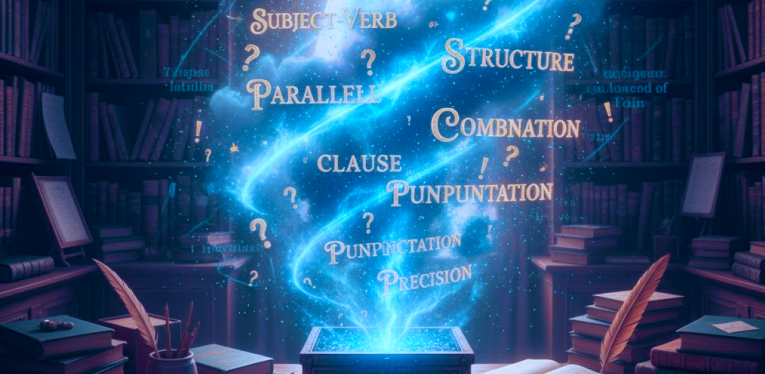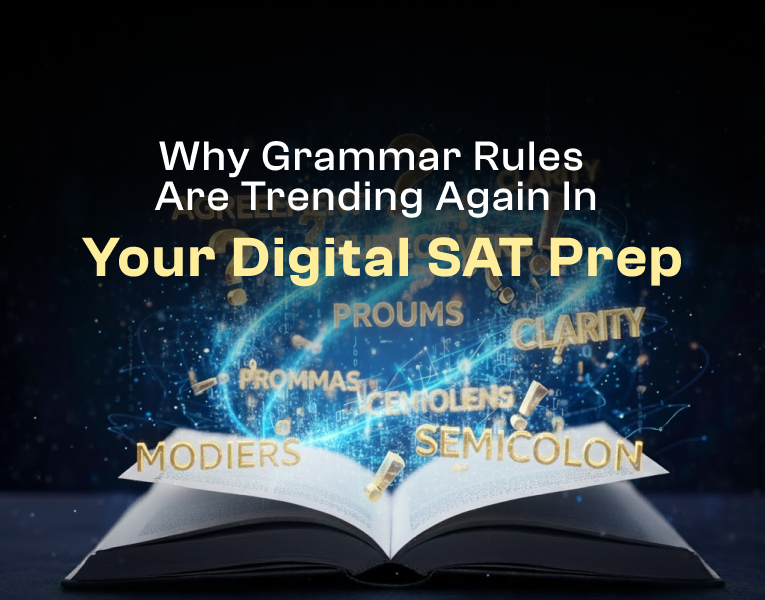In the world of SAT preparation (Grammar Rules), content often shifts and students worry about big changes in format, new types of passages, or unfamiliar question patterns. But one surprisingly strong trend that’s gaining momentum among students and tutors is: back to basics - grammar, punctuation, and standard English conventions in the Reading & Writing section.
Why is grammar getting so much attention? A few reasons:
- Emerging prep-resources highlight that while the format (digital, shorter passages, more adaptive) might be new, classic grammar errors - subject-verb agreement, pronoun/antecedent agreement, punctuation misuse, faulty comparison - haven’t gone away. For example, grammar rule compilations emphasise these areas clearly.
- Many students report that vocabulary and long reading passages, while still relevant, are less distinct differentiators in recent practice; instead, precision in grammar and usage is showing up as a more reliable way to pick up easy-to-moderate points quickly.
- The digital format means more efficient question design, so quicker decisions, more flagging, and less time for deliberation. That elevates value of faster recognition of grammar errors.
Bottom line: if you’re aiming to elevate your Reading & Writing (R&W) score on the Digital SAT, focusing on grammar mastery might give you an unfair edge.
Top Grammar & Usage Rules You Can’t Ignore
Here are the grammar/usage rules that are trending right now among high-score students, along with how you can turn each into a tactical advantage:
1. Subject-Verb Agreement
This rule continues to be a heavy-hit on the test: the subject must agree in number with its verb, even when separated by clauses or phrases.
2. Pronoun-Antecedent Agreement & Clear Referents
Pronouns must clearly refer to the correct antecedent in number and gender, a common trap for careless readers.
Tactical tip: Whenever you see “it,” “they,” “which,” “that,” ask: what is this pronoun referring to? If it's ambiguous or mismatched, suspect an error.
3. Punctuation & Sentence Structure (Especially Non-Essential Clauses)
Commas, dashes, semicolons, when used correctly, matter. For instance: a non-essential clause should be enclosed in two commas (or dashes).
Tactical tip: In reading-writing questions, when you spot extra punctuation (commas, dashes) check: is the clause really non-essential (i.e., removable without loss of meaning)? If not, there’s likely an error.
4. Faulty Comparisons & Parallelism
Comparisons must be between like items (“better than he,” “as many as them”), and lists/structures must maintain parallel form.
Tactical tip: Whenever you spot “than,” “as,” “compared to,” or a list of items, quickly check: are the items the same kind? If not, it’s faulty.
5. Standard English Conventions in the Digital Format
The digital Reading & Writing section brings shorter passages and more focused questions, but the standard-English conventions (grammar/usage/punctuation) remain central. Preparing specifically for this in a digital context offers payoff.
Tactical tip: Use on-screen tools in your practice: flag, mark, annotate. Familiarity helps you move faster in actual test.

How to Turn This Grammar Trend into a +150 Score Boost
If you align your prep with this grammar-trend, here’s a 4-step action plan you can deploy in the next 4-6 weeks:
- Grammar Audit (Week 1): Take a full-length digital R&W practice test (simulate the real environment), isolate every standard-English-convention question. Classify by rule type (subject-verb, pronoun, punctuation).
- Targeted Grammar Drills (Weeks 2-4): Spend 30-40 minutes each day drilling 10-15 questions focused purely on the five rule-categories above. Use toggles: “I know this rule,” “Need review,” “Trap alert.”
- Integrated Practice Tests (Weeks 5-6): Now shift to full digital R&W modules (timed) and include grammar questions in full context. Focus on speed + accuracy: aim for minimal hesitation on convention questions.
- Final Review & Strategy Refinement: Use error logs from your drills/tests to identify your grammar-weak rule. For example, maybe you consistently miss faulty comparisons. Do a mini-boost session just for that. On test day, flag convention questions early, answer confidently, spend extra time on tricky ones.
Why TutorWand Is the Smartest Way to Prepare for the Digital SAT
If you’re serious about improving your SAT Reading & Writing score - especially grammar and English conventions - TutorWand is the ultimate preparation tool trusted by students and institutes in 20+ countries.
Here’s how TutorWand helps you master the new SAT faster and smarter
- Real Digital SAT Interface:
Experience the exact adaptive, module-based environment you’ll see on test day. - Adaptive Mock Tests:
TutorWand’s AI dynamically adjusts question difficulty - exactly like the real SAT algorithm. - AI-Powered Performance Reports:
Get instant analytics that pinpoint your weak grammar rules, pacing issues, and accuracy zones. - Personalized Study Plan:
Based on your test results, TutorWand auto-generates a focused study plan for grammar, reading, and math - saving you hours of guesswork. - 5000+ Curated Questions:
Access a massive library of high-quality Digital SAT style questions designed by expert educators and verified by AI models. - Perfect for Institutes & Educators:
TutorWand also offers white-labeled dashboards for coaching centers - letting them run adaptive SAT mock tests under their own brand.
Take your first Digital SAT practice test free at TutorWand.com and get an instant AI report highlighting your grammar skill gaps.

